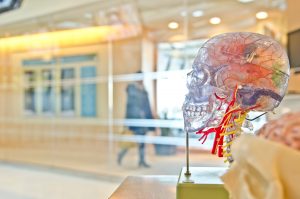Trauma & Attachment
 As information on trauma becomes more prevalent there is more to know than being trauma informed or trauma sensitive. Brain research and our understanding of neuroscience continues to deepen and expand. As a starting point to further examine trauma and attachment from a brain-body approach pieces from experts in the field are shared below:
As information on trauma becomes more prevalent there is more to know than being trauma informed or trauma sensitive. Brain research and our understanding of neuroscience continues to deepen and expand. As a starting point to further examine trauma and attachment from a brain-body approach pieces from experts in the field are shared below:
Feeling Unsafe
“Traumatized people chronically feel unsafe inside their bodies: The past is alive in the form of gnawing interior discomfort. Their bodies are constantly bombarded by visceral warning signs, and, in an attempt to control these processes, they often become expert at ignoring their gut feelings and in numbing awareness of what is played out inside. They learn to hide from their selves.” (p.97)” ― Bessel A. van der Kolk, The Body Keeps the Score: Brain, Mind, and Body in the Healing of Trauma
World View & Negative Beliefs
“The greatest damage done by neglect, trauma or emotional loss is not the immediate pain they inflict but the long-term distortions they induce in the way a developing child will continue to interpret the world and her situation in it. All too often these ill-conditioned implicit beliefs become self-fulfilling prophecies in our lives. We create meanings from our unconscious interpretation of early events, and then we forge our present experiences from the meaning we’ve created. Unwittingly, we write the story of our future from narratives based on the past…Mindful awareness can bring into consciousness those hidden, past-based perspectives so that they no longer frame our worldview.’ Choice begins the moment you disidentify from the mind and its conditioned patterns, the moment you become present…Until you reach that point, you are unconscious.’ …In present awareness we are liberated from the past.”― Gabor Maté, In the Realm of Hungry Ghosts: Close Encounters with Addiction
Emotional Regulation
“From early infancy, it appears that our ability to regulate emotional states depends upon the experience of feeling that a significant person in our life is simultaneously experiencing a similar state of mind.” ―Daniel Siegel
Connection
“The most traumatic aspects of all disasters involve the shattering of human connections. And this is especially true for children. Being harmed by the people who are supposed to love you, being abandoned by them, being robbed of the one-on-one relationships that allow you to feel safe and valued and to become humane—these are profoundly destructive experiences. Because humans are inescapably social beings, the worst catastrophes that can befall us inevitably involve relational loss. As a result, recovery from trauma and neglect is also all about relationships—rebuilding trust, regaining confidence, returning to a sense of security and reconnecting to love. Of course, medications can help relieve symptoms and talking to a therapist can be incredibly useful. But healing and recovery are impossible—even with the best medications and therapy in the world—without lasting, caring connections to others.” ― Bruce D. Perry, The Boy Who Was Raised As a Dog: And Other Stories from a Child Psychiatrist’s Notebook: What Traumatized Children Can Teach Us About Loss, Love and Healing
Body Responses
“The bodies of traumatized people portray “snapshots” of their unsuccessful attempts to defend themselves in the face of threat and injury. Trauma is a highly activated incomplete biological response to threat, frozen in time. For example, when we prepare to fight or to flee, muscles throughout our entire body are tensed in specific patterns of high energy readiness. When we are unable to complete the appropriate actions, we fail to discharge the tremendous energy generated by our survival preparations. This energy becomes fixed in specific patterns of neuromuscular readiness. The person then stays in a state of acute and then chronic arousal and dysfunction in the central nervous system. Traumatized people are not suffering from a disease in the normal sense of the word- they have become stuck in an aroused state. It is difficult if not impossible to function normally under these circumstances.” ― Peter A. Levine

